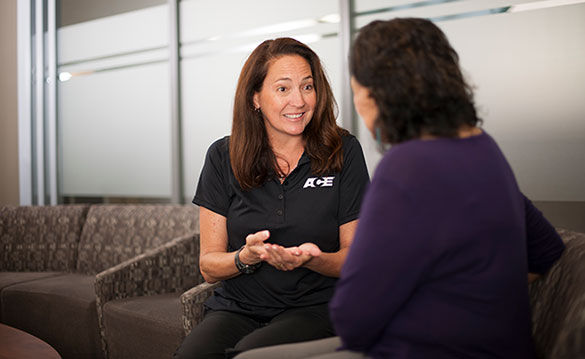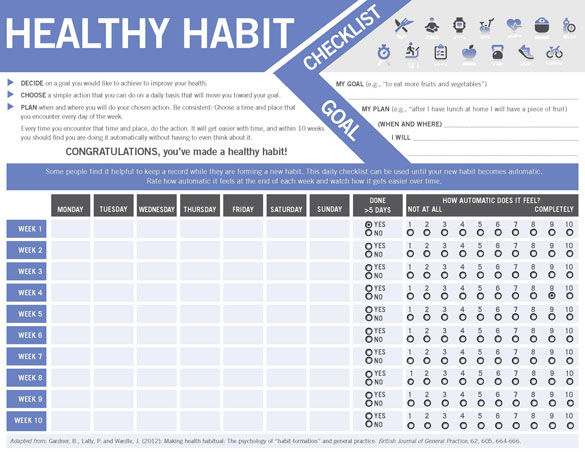
“…when I first started working with Tracy [personal trainer], finding motivation was hard. She advised me to think of exercise as an automatic routine, no different from brushing your teeth, to avoid getting distracted. Now it is part of my life—I exercise Monday to Friday at 10am and always stick with it.” – Gwyneth Paltrow
In this 2013 interview with The Telegraph, Gwyneth Paltrow credited her personal trainer with helping her make exercise a habit—a routine, sustainable part of life, just the same as brushing her teeth. For Gwyneth, and all of us, habits are a clear vehicle to make behavior change stick.
While it may not boil down to a formula as simple as 1+1=2, there is a science to forming positive health habits. By learning the science behind habit formation and helping clients to implement healthy habits, health and fitness professionals can strengthen their impact and help more clients make lasting, positive health-behavior changes.
Psychologists define habits as “actions that are triggered automatically in response to contextual cues that have been associated with their performance.” In other words:
Habit = Trigger (or cue) + Behavior in response to cue + Repetition
For example, the habit of buckling one’s seatbelt develops after repeatedly putting on a seatbelt immediately after shutting the door, every single time. Eventually, it becomes second nature, requiring very little thought or motivation.
Psychological research makes clear that consistently repeating an action in a consistent context ultimately makes the behavior automatic, thus removing the need for “motivation” to engage in the behavior. Once a habit is in place, a person’s goals or intentions become less important, as the behavior has become automatic, and effort is not needed to continue to do it.
Helping a client develop a new health habit consists of three phases:
1. Initiation Phase
Goal: Get started!
The initiation phase is when the client selects the goal behavior and the context in which it will be done. For example, a client may choose to go for a five-minute walk at the beginning of his lunch break at work each day. It is important that the client is sufficiently motivated to start, chooses the goal behavior and the context (existing habit or activity) to attach it to (ideally, it is a very salient habit), and starts small to have early success, which builds self-efficacy and makes it more likely the behavior will continue.
2. Learning Phase
Goal: Establish automaticity.
The learning phase is the time when the behavior is repeated in the chosen context; that is, it occurs around the same time and after the same existing habit or activity every day. While the amount of time it takes to establish a habit varies by individual, for most people continuing this pattern for 10 weeks will be sufficient to establish automaticity. Figure 1 includes a tracking sheet to help clients keep tabs on the habit and stay motivated to continue it each day.
Figure 1. A Tool to Help Clients Form a New Healthy Habit
Click to download an interactive PDF (71kb).

3. Stability Phase
Goal: The new behavior is now a habit!
In this phase, the habit is now well formed and will persist over time with minimal effort.
For practice, check out the program TinyHabits.com, developed by Stanford psychologist BJ Fogg, who elaborated upon and translated the science of habit formation into a free online program.
References
Gall, B.M. and Duckworth, A.L. (2015). More than resisting temptation: Beneficial habits mediate the relationship between self-control and positive life outcomes. Journal of Personal and Social Psychology, 109, 3, 508-525.
Gardner, B., Lally, P. and Wardle, J. (2012). Making health habitual: The psychology of “habit-formation” and general practice. British Journal of General Practice, 62, 605, 664-666.





 by
by 



